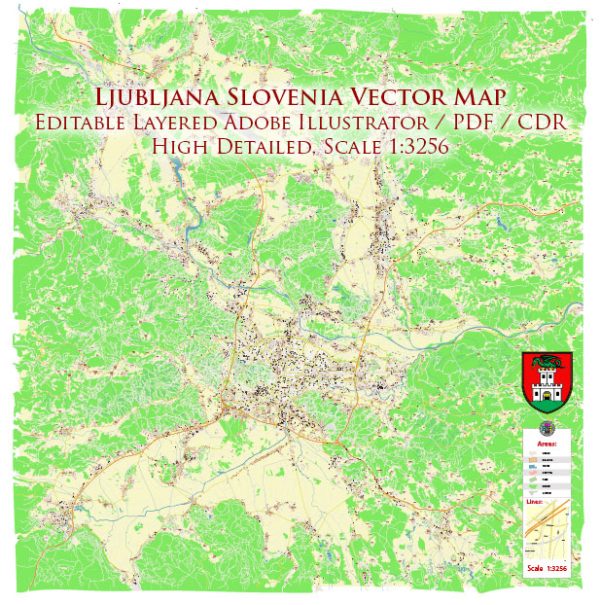Ljubljana is the capital and largest city of Slovenia, a country located in Central Europe. The political and economic history of Ljubljana is closely tied to the broader historical developments of Slovenia and the region.
Vectormap.Net provide you with the most accurate and up-to-date vector maps in Adobe Illustrator, PDF and other formats, designed for editing and printing. Please read the vector map descriptions carefully.
Here is a brief overview of the key periods in Ljubljana’s political and economic history:
- Ancient and Medieval Periods:
- Ljubljana’s history dates back to Roman times when it was known as Emona. The area was an important Roman trade and military center.
- After the fall of the Roman Empire, the region witnessed various rulers, including the Habsburgs, the Habsburg Monarchy, and the Holy Roman Empire.
- The medieval period saw the construction of Ljubljana Castle, which played a strategic role in the defense of the city.
- Habsburg Rule:
- Ljubljana, like the rest of Slovenia, came under Habsburg rule in the 14th century. The Habsburg Monarchy continued to influence the region for centuries.
- The 19th century marked the rise of nationalism and the Slovene national movement, contributing to a sense of Slovenian identity.
- World War I and the Kingdom of Yugoslavia:
- After World War I, the Kingdom of Serbs, Croats, and Slovenes (later Yugoslavia) was established, and Ljubljana became part of this new state.
- The city grew economically during this period, with industrialization and urbanization taking place.
- World War II and Socialist Yugoslavia:
- During World War II, Ljubljana and Slovenia were occupied by Axis powers. After the war, Slovenia became one of the six republics in the Socialist Federal Republic of Yugoslavia.
- The socialist period brought industrialization and modernization but also political repression.
- Independence and Post-Socialist Period:
- Slovenia declared its independence from Yugoslavia in 1991, leading to a brief Ten-Day War. Ljubljana played a significant role during this period.
- The post-socialist era saw economic reforms and the transition to a market economy. Ljubljana became a key economic and cultural center in the newly independent Slovenia.
- European Union and NATO Membership:
- Slovenia joined the European Union in 2004 and NATO in 2004, marking a further integration into European institutions.
- Ljubljana continued to experience economic growth and development, with a focus on tourism, services, and technology sectors.
- Contemporary Period:
- In the 21st century, Ljubljana has solidified its position as the cultural, economic, and political hub of Slovenia.
- The city has invested in sustainable development, green initiatives, and cultural projects, contributing to its reputation as a vibrant European capital.
Ljubljana’s history is a tapestry of influences, from Roman times to the present day, reflecting its role as a dynamic and evolving European city.


 Author: Kirill Shrayber, Ph.D.
Author: Kirill Shrayber, Ph.D.